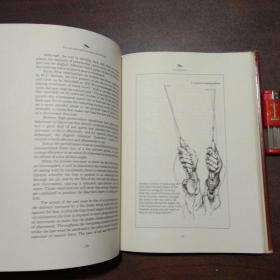The Art of Bait Fishing: Techniques and Tips for Perfecting the Float Adjustment
Bait fishing, an age-old tradition, remains one of the most popular and rewarding methods of angling. Whether you're a seasoned fisherman or a beginner, mastering the float adjustment is a fundamental skill that can significantly enhance your fishing experience. The float, or bobber, is a crucial tool that helps you detect when a fish is biting. Here, we delve into the various methods and techniques for perfecting the float adjustment, ensuring you're ready to cast out with confidence.
Understanding the Float
Before diving into the adjustment techniques, it's essential to understand the float itself. The float is typically made of plastic, wood, or foam and is designed to float on the water's surface. It is connected to your fishing line via a swivel or a leader, which helps in detecting subtle movements of the float.
Choosing the Right Float
The first step in perfecting your float adjustment is selecting the right float for your fishing conditions. Here are a few factors to consider:
Size: The size of the float should be proportional to the size of the bait and the depth of the water. Larger floats are suitable for deeper waters and heavier baits, while smaller floats are better for shallow waters and lighter baits.
Shape: Floats come in various shapes, such as pencil, bullet, and spherical. The shape affects how the float moves in the water, with pencil floats being more sensitive to subtle movements.
Buoyancy: The buoyancy of the float determines how much it rises and falls. A float with higher buoyancy will rise faster and fall slower, while a float with lower buoyancy will do the opposite.
Adjusting the Float
Once you have the right float, it's time to adjust it properly. Here are some key techniques:

Setting the Depth: To set the depth, attach the float to your line and place the rig in the water. Adjust the float so that it is just visible on the surface. This ensures that your bait is at the desired depth.
Balancing the Float: The float should be balanced so that it is neither too tight nor too loose. If the float is too tight, it will not move with the bait, making it difficult to detect a bite. If it's too loose, the float will move too much, potentially causing you to miss a bite.
Adjusting Sensitivity: To increase sensitivity, use a lighter float and a shorter leader. This allows the float to detect even the smallest movements of the bait. Conversely, for less sensitive fishing, use a heavier float and a longer leader.
Adding Weight: If you need to get your bait deeper, add weight to the bottom of the float. This can be done by threading split shot onto the line or using a weight clip. Be careful not to add too much weight, as it can cause the float to sink too quickly.
Tuning the Float: For more precise adjustments, you can tune the float by adding or removing air. This is done by inserting a needle into the float and adjusting the air pressure. This method requires some practice but can be incredibly effective.
Additional Tips
- Practice: The best way to master float adjustment is through practice. Spend time experimenting with different floats, weights, and depths to find what works best for you.
- Observe: Pay close attention to how the float moves. A sudden, sharp dip may indicate a fish bite, while a slow, steady movement might mean the bait is being ignored.
- Weather Conditions: Be mindful of weather conditions, as wind and waves can affect the float's movement. Adjust your setup accordingly.
In conclusion, mastering the float adjustment is a key skill for any bait fisherman. By understanding the different types of floats, adjusting the depth and sensitivity, and observing the float's movements, you'll be well on your way to becoming a more successful angler. So, grab your rod, choose the right float, and get ready to cast out with confidence. Happy fishing!












